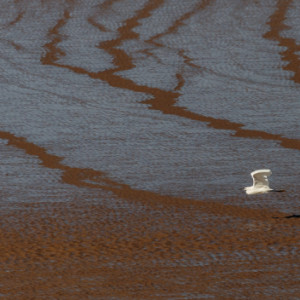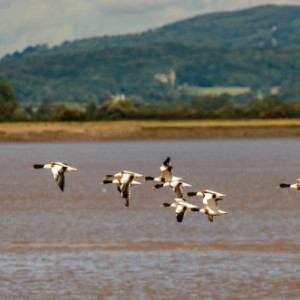Sunshine at Slimbridge Wetland centre
When I saw the early morning light shining today, I suddenly thought of visiting the Wildlife and Wetland Centre at Slimbridge. There is a special path there called the Summer Walkway which leads out of the main large enclosed area and down to the bank of the River Severn estuary. The walkway closes quite soon when the weather makes the access more difficult.
I recently went there with my friend Pip and I decided to revisit it to watch the strong tide push up the water in river and flood the exposed sandbanks. Today the high tide was expected to be at about 1300, so a morning visit today would be perfect timing. I arrived at 1030am and walked straight to the walkway and out about half a mile to the special hide set up on the edge of the river bank on the far side of the flood prevention embankment.
On the way there the first birds I saw were these two cranes flying out from the main grounds of the wetlands towards the meadows by the edge of the river. They landed at a place where there were eleven other cranes all in loud voice apparently in greeting. I have added an 'Extra photo' of the group as these two land.
By the time I reached the river bank, along a path which had obviously flooded at the last high tide, the cranes were spooked and all flew away about a mile downstream. I stood on the lowest safe point beside the river which was flowing in small streams between the various extensive sandbanks. It was windy but warm and with my shirt off I stood entranced by the wild environment with birds occasionally flying about to feeding places on the shore line. The views are wonderful looking in all directions, from the Cotswold escarpment in the east to the Forest of Dean hills and May hill in particular on the west bank.
I saw gulls of course but was excited to see an egret feeding down below me, cormorants cruising at high speed upstream, land birds of field and hedgerows, geese, an oystercatcher and then a beautiful fly past by a group of shelduck flying downstream to catch the incoming tide. Watching the tide was fascinating and it only took about an hour for the mile wide estuary to be covered by water with very stretches of water where different currents collided. The sea is so powerful and the tide actually moves water about thirty miles upstream, most noticeably on the spring tides which form the famous Severn Bore.
I have added some "extra photos' of some of them as well. I shall go back again soon as I heard that a hen harrier was seen yesterday as well as a peregrine falcon. The winter visitors will start to appear soon when they arrive from the colder climates of the northern latitudes.




Comments
Sign in or get an account to comment.


